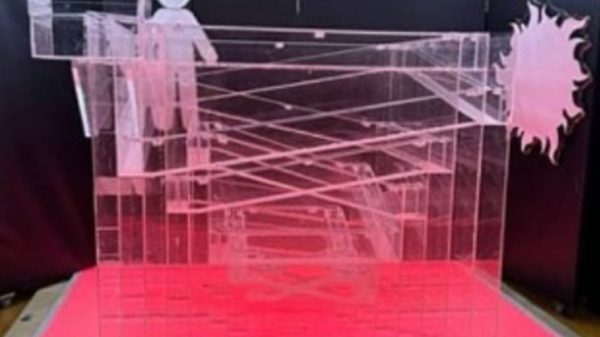
We all like to think we have style. Whether it’s a trademark hoodie or sharp suit, the way we dress is supposed to be a reflection of our personalities. With an explosion in online fashion retailers, however, finding the perfect outfit can prove to be a bewildering task.
But what if you left all of your sartorial decisions about which clothes to buy to a robot? Fashion algorithms can analyse millions of clothes online to find the items that exactly suit your body shape and sense of style.
Such algorithms are no longer the domain of a handful of obscure start-ups. This week, Amazon announced a new personal shopping service for men in the US which promises to deliver a monthly box of clothes which exactly fit the user’s taste in fashion. For $4.99 (£3.88) a month, Amazon will pick out a selection of clothes for you, which you pay for on top of the monthly subscription.
The launch of the service comes as customers have increasingly turned to e-commerce for clothes shopping. Kantar measured an increase in online fashion sales from 30pc to 77pc of total sales during lockdown.
Volatility caused by the pandemic is expected to fall away, with ReportLinker expecting the global fashion e-commerce market to rebound from a drop this year to grow to $672bn by 2023.

Stitch Fix went public in New York in 2017
Credit: Nasdaq
The concept of paying for the privilege of buying clothes which are likely to have been selected for you by an algorithm working with a human stylist can seem strange. But a large part of the appeal comes from the lack of access which many people have to any kind of style advice.
“There’s so little styling advice out there,” says Kostas Koukoravas, the chief executive of fashion AI start-up Intelistyle. “Styling advice is really reserved for the big spenders. Even if you look at luxury brands, they reserve it for their high spenders.”
Walk through the office of a fashion technology business and you’ll see stylists examining racks of clothes rooms next to programmers tweaking machine learning algorithms.
Koukoravas believes it’s this combination of human stylists and AI which makes it all work. “When we first started, we were doing everything with AI,” he says. “Having a bunch of scientists trying to figure out style on their own was a huge, huge problem.”
A key rival to Amazon’s new AI-powered fashion service is Stitch Fix, the American business which sends regular boxes of clothes picked by a combination of humans and machines to its customers.
The business, which went public in 2017, expanded to the UK last year and has grown its London office from a dozen of employees to more than 200 people, including 120 human stylists.
“Humans are much better at empathy, creativity and understanding nuances that machines still struggle with today,” says Stitch Fix’s UK head Simon Leesley. “We let our AI do the heavy lifting to find items in your size and price range and style. It allows the stylist to focus on the curation of the best five items for each customer.”
The more data that fashion start-ups gain, the better the AI-powered fashion recommendations get. Stitch Fix, for example, has collected more than 30 million data points on customers in the UK since its launch here last year.
Thread, another London fashion start-up, also uses a mixture of AI and human stylists to select clothes for shoppers. It works in reverse to Stitch Fix, with human stylists assembling collections of outfits before AI makes the final decision on what to recommend to shoppers.
“You have stylists spending time putting together different looks and the AI is observing and learning from that,” says chief executive Kieran O’Neill.
The business has raised more than $39m (£30m) from backers including H&M as well as Demis Hassabis and Mustafa Suleyman, two of the co-founder of Google-owned AI business DeepMind.

Thread co-founders Ben Phillips (left), Kieran O'Neill (centre) and Shaunie Brett (right)
Credit: Barry Macdonald
The possibility of using this technology to help physical clothes stores hook in customers to more sales has seen a rush of interest for Intelistyle, which licences its technology for others to use.
“The problem that you have as a retailer is that stylists cost a lot,” Koukoravas says. “If you can take sales assistants and help them with AI to become expert stylists, that combination achieves much better retail results than one or the other.”
Major investments from companies like Amazon and Stitch Fix have served as a vote of confidence in AI-powered fashion, meaning the industry is set to grow substantially in the years to come.
Some executives think this mixture of humans and robots is the new normal. “Ultimately I believe the entire market will go this way,” O’Neill says. “In 10 years time, the idea of trying to browse through thousands of things across multiple different retailers, we’ll look back on that the way that we did writing letters to our friends to stay in touch versus using Instagram.”





















































Свежие комментарии